Pho Noodle Soup: Discover Vietnam’s Iconic Dish
Pho noodle soup is Vietnam’s most iconic dish, blending rich broth, tender meat, and fresh herbs into a comforting bowl that reflects the nation’s vibrant culinary heritage.
Pho noodle soup is more than just a meal; it’s a cultural icon in Vietnam. Often enjoyed in the morning, it features flat rice noodles, sliced meat, and richly spiced broth. With herbs, lime, and chili on the side, each bowl can be customized for a unique, flavorful experience.
🍲 The Origins of Pho in Vietnam
To the uninitiated, pho may seem like a simple noodle soup. But look closer and you’ll find rich history and culture. Born in Northern Vietnam in the early 20th century, it began as humble street food for workers. Over time, it spread across the country, evolving with local tastes and ingredients. Today, it reflects both tradition and adaptation in every bowl. In Hanoi the broth is clear and subtly spiced. Meanwhile, in Ho Chi Minh City the southern version is bolder and sweeter. These differences reflect Vietnam’s rich regional identities. Yet the heart of the dish remains the same. Each bowl connects people to heritage and home. Through all this, the soul of pho stays rooted in tradition. And today, it continues to tell the story of Vietnam in every fragrant spoonful.
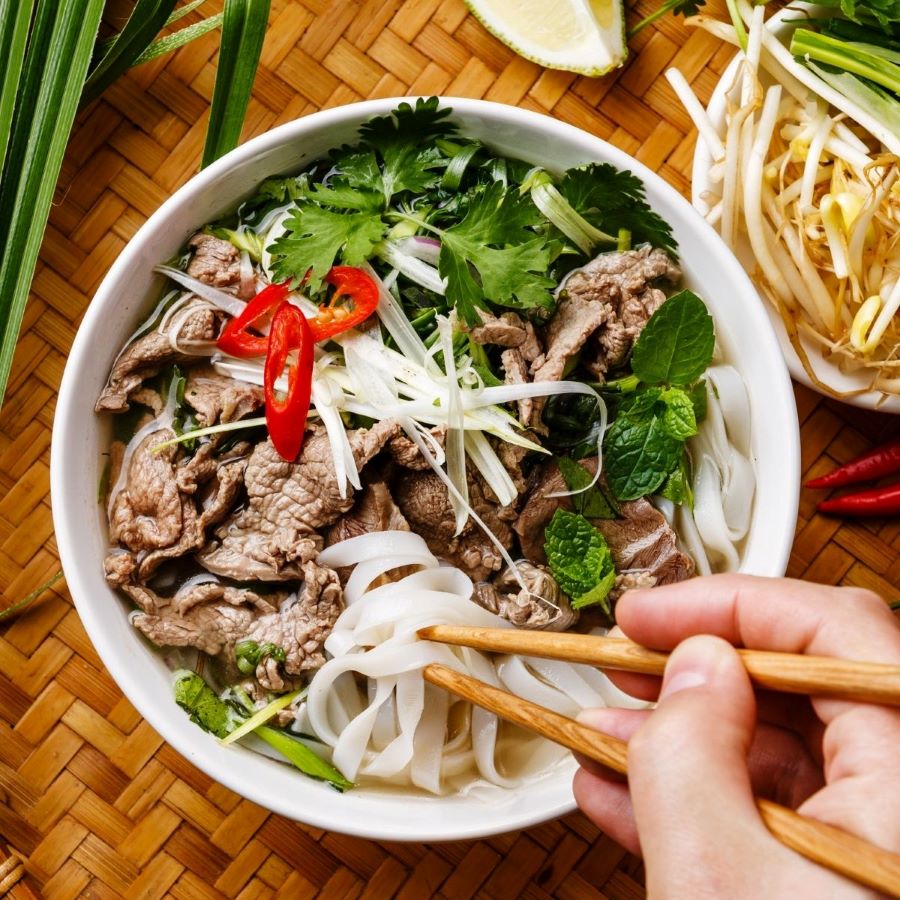
Pho noodle soup served hot with herbs, a taste of Vietnam’s soul
🏙️ Pho Noodle Soup in Ha Noi
Travel to Vietnam and a journey through its capital, Ha Noi, is never complete without tasting pho. A pho pilgrimage here is more than just a meal. It’s a deep cultural experience rooted in tradition and pride. Street Food Hanoi is practically synonymous with this iconic dish. The version found in Ha Noi is known for its elegance and subtlety. It is typically lighter and less sweet than the Southern style. The broth is crystal clear and full of depth. Long hours of simmering beef bones, star anise and charred onions create that distinct flavor.
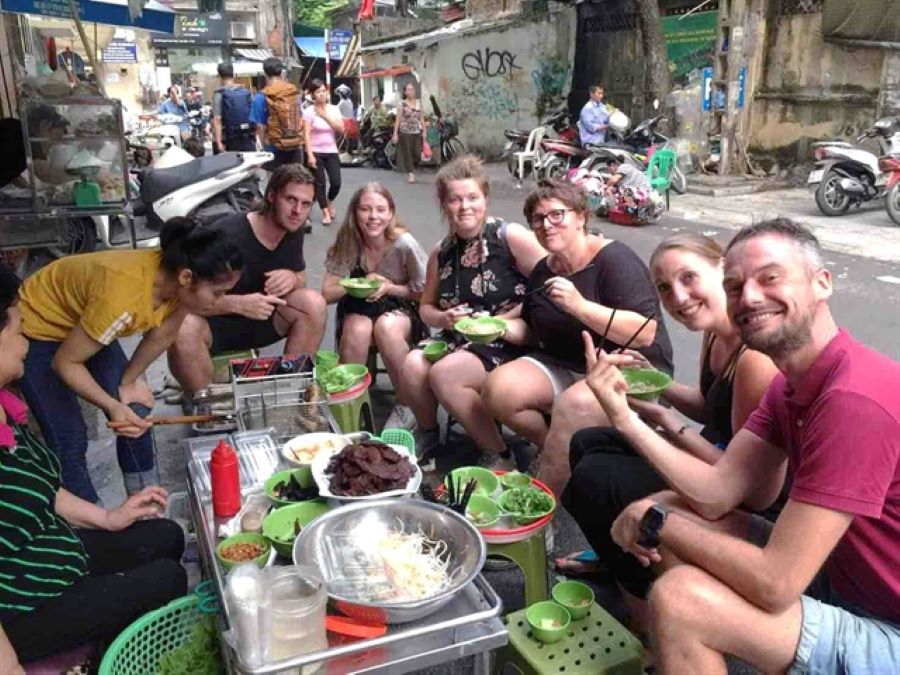
Foreign visitors enjoy Pho noodle soup together on a bustling Hanoi street
Walk through the Hanoi Old Quarter in the early morning to truly feel the food culture. Locals sit on low stools, huddled over steaming bowls. The aroma of broth fills the narrow streets. Institutions like Pho Gia Truyen and Pho Thin have served pho for generations. These spots offer bowls that capture history and heart in every spoonful. After your meal, continue your cultural journey. Visit landmarks such as the Ho Chi Minh Museum to deepen your understanding of Vietnam’s heritage. Through food and history, you gain insight into daily life. In Ha Noi, every detail speaks to tradition, from recipes to the rhythm of the streets.
🌿 Pho Noodle Soup in Ho Chi Minh
Down in Ho Chi Minh, formerly known as Saigon, pho reveals a bolder and livelier character. The Southern version embraces a richer and slightly sweeter broth. This flavor profile comes from abundant herbs and vegetables in the region. Pho noodle soup here arrives with generous sides of lime, chili and fresh bean sprouts. A colorful garden of herbs invites each diner to tailor the bowl to their liking. This interactive approach reflects the region’s vibrant and welcoming spirit.
Moreover, the flavors echo the openness of Southern Vietnamese culture. While in Ho Chi Minh, don’t miss legendary spots like Pho Hoa Pasteur and Pho Le. These eateries serve bowls that showcase the Southern twist on Vietnam’s national dish. Each spoonful captures a balance of deep flavor and personal expression.
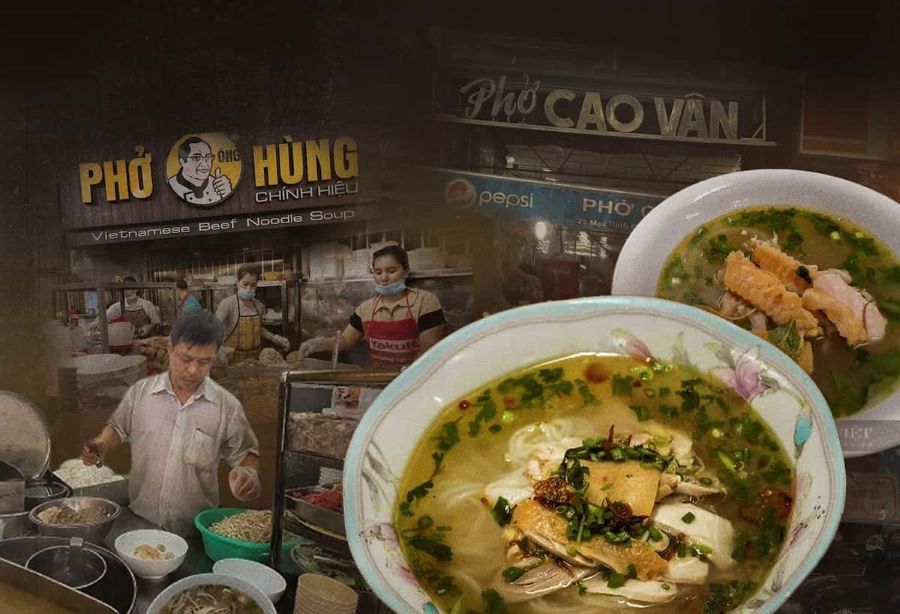
Locals and tourists savor Pho noodle soup at the best spot in Ho Chi Minh City
Southern Vietnam tours often highlight these culinary differences in their itineraries. Travelers explore how food tells the story of local identity and tradition. From street vendors to family-run restaurants, each stop adds to the flavorful journey. This regional expression of pho offers more than taste. It opens a door to understanding Vietnam’s diversity through one beloved dish. In the South, every bowl becomes a reflection of community, flavor and regional pride.
🔄 North vs. South Pho Noodle Soup
One of the most fascinating aspects of pho is how it reveals Vietnam’s cultural and regional divide. In the North, pho Bac stands for elegance and simplicity. It features a clear, light broth and limited garnishes. Often, it comes without bean sprouts or sauces like hoisin. Instead, the focus remains on balance and purity of flavor.
In contrast, pho Nam, the Southern version, offers a more vibrant and layered experience. It includes a richer broth and bold garnishes. Diners often add lime, chili and a mountain of fresh herbs. This contrast reflects more than taste. It expresses the character of each region.
These distinctions go beyond the kitchen and into identity. Northern cuisine mirrors traditions rooted in history and structure. Southern food shows openness, variety and regional abundance.
Pho noodle soup becomes a way to experience these differences firsthand. For visitors, Northern Vietnam tours often highlight pho as a cultural symbol. These tours explore how food connects with history, values and lifestyle. Travelers learn how a single dish captures centuries of regional evolution. By tasting pho in both regions, visitors uncover more than flavor. They engage with Vietnam’s deep, diverse story told one bowl at a time.
🏠 Pho Noodle Soup at Home & Beyond
Though pho began as humble street food, it has found its way into homes and fine dining spaces. Across Vietnam, this dish is now part of both daily life and gourmet cuisine. In households, it carries deep personal significance and long-standing tradition. Families often guard their recipes like treasures, handed down from one generation to the next.
Whether enjoyed as a simple breakfast or a cherished Sunday meal, pho noodle soup remains a symbol of comfort and pride. Its presence at the table reflects more than taste. It represents family, memory and cultural connection.
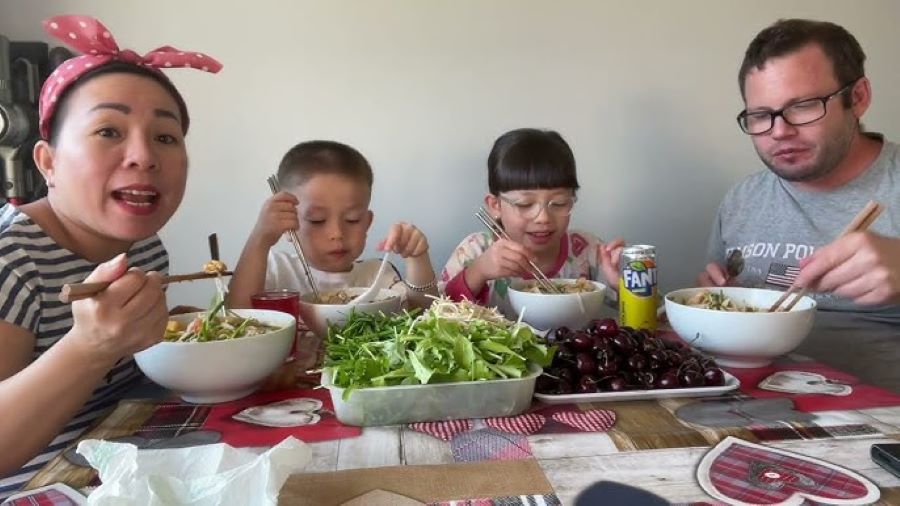
Pho noodle soup brings generations together for love, laughter and a delicious meal
Meanwhile, upscale restaurants have reimagined pho in creative and luxurious ways. Diners can find versions made with wagyu beef, bone marrow or foie gras. Even with these innovations, the core elements stay true. The broth must be rich and layered. The noodles must hold the perfect texture.
For visitors, Vietnam family tours often include shared meals that highlight these home-cooked traditions. Through these moments, travelers discover how deeply food is tied to everyday life. Beyond the markets and street vendors, pho lives in family kitchens and special gatherings. This balance of tradition and innovation is what keeps pho meaningful across generations and settings.
🛵 Exploring Vietnam’s Iconic Pho
There’s something special about sitting on a low plastic stool in Vietnam with a steaming bowl of pho. The buzz of scooters, the chatter of locals and the rising steam form a perfect urban backdrop. This everyday scene turns eating into a rich sensory experience.
The clatter of chopsticks and the warmth of the broth create a rhythm you won’t forget. Every bite offers a mix of flavor, aroma and texture that defines the dish.
Pho noodle soup stands at the heart of this daily ritual. Its appeal goes beyond its ingredients. It captures the essence of Vietnamese cuisine, which is built on harmony and balance.
Each element-beef slices, rice noodles and fresh herbs-plays a key role in the overall experience. First, the broth delivers deep umami. Then, the lime adds brightness to every spoonful. Next, bean sprouts bring satisfying crunch. Finally, the herbs offer fresh aroma that lifts the dish.
Altogether, this combination shows how well Vietnamese cuisine balances sweet, sour, salty, bitter and umami. More than that, it’s not just food-it’s a shared moment with the street and its people. Whether you enjoy it at sunrise or late at night, pho always offers a complete and deeply satisfying experience.
📚 Pho in Vietnamese Food Guides
Any complete Vietnam Food Guide will certainly feature pho as a must-try dish for every visitor. However, it is not just about checking off a box. To truly understand pho is to understand Vietnam-its history, its people and its enduring spirit. This iconic dish reflects resilience, hospitality and everyday life.
Pho noodle soup is eaten by construction workers, teachers, students and CEOs. It is served at roadside stalls, family kitchens and luxury restaurants. It moves beyond class, background and age with ease.
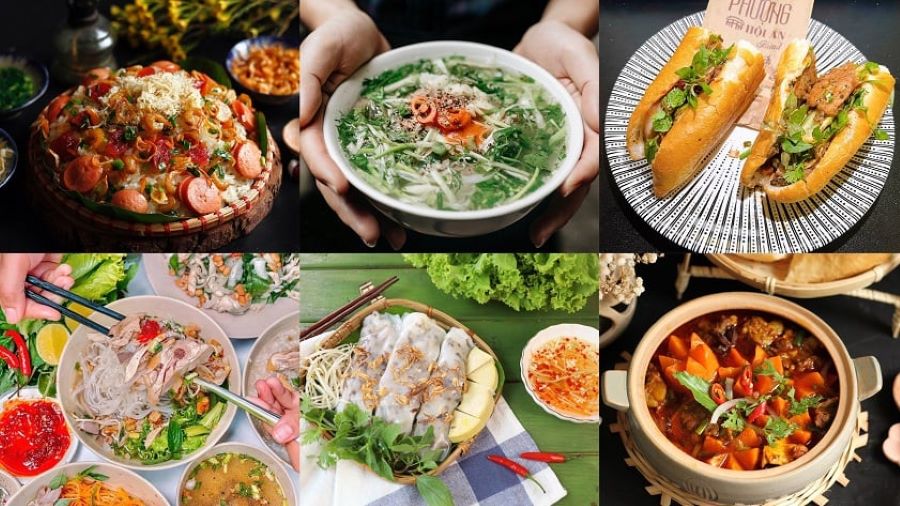
Pho noodle soup leads the way in every authentic Vietnamese food lover’s journey.
Each bowl offers warmth and connection, no matter where it is served or who is enjoying it. Because of this, the shared experience is what makes pho so powerful.
For those eager to dive deeper, not just skim the surface of Vietnam, pho serves as the perfect starting point. In the north, particularly in Ha Noi, the broth is delicate and spiced with restraint. By contrast, in Ho Chi Minh City, it is richer, more fragrant and filled with herbs.
These regional differences not only reflect taste preferences, but also tell stories of migration, adaptation and pride. In fact, each version carries layers of culture in every sip. As a result, tasting pho becomes more than a meal-it becomes an introduction to the country’s soul. Ultimately, it is more than food. It is, instead, a flavorful gateway to understanding Vietnam on a deeper, more personal level.
✅ Conclusion
To travel to Vietnam is to discover more than just stunning landscapes and historic landmarks. It is to taste culture in its most heartfelt form. Among all the dishes, none captures that spirit more than pho.
Whether you’re weaving through the buzz of Street Food Hanoi or savoring bold flavors on Southern Vietnam tours, pho noodle soup remains your guide. Not only does it nourish, but it also connects you to people, places and traditions in the most delicious way.
So, as you plan your adventure-whether heading north or south-let pho be your starting point. Its warmth welcomes you, its flavor teaches you, and its memory stays with you long after the last bite. Simply take a seat by the street, inhale the rising steam, and let Vietnam’s story unfold—one bowl at a time.
In the end, there is no better way to experience the heart of Vietnam than through its food. So come hungry and taste the journey.
Start planning your tailor-made Vietnam tour by contacting one of our specialists…







